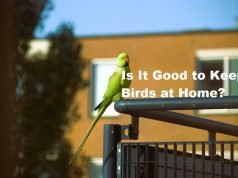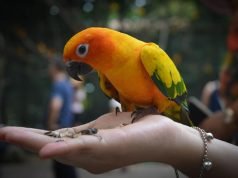Mastering Bird Training: Unlocking the Secrets to Teach Your Feathered Friend New Tricks
Learn how to train your pet bird to new tricks, strengthen your bond, and improve their mental health with this comprehensive guide to bird training.
Table of Contents
Introduction to Bird Training
Training pet birds is crucial for their mental and physical well-being, helping prevent boredom and ensuring a fulfilling life for them. By engaging in training sessions, bird owners can foster a strong bond with their feathered companions, enhancing communication and trust between the bird and its owner. Proper training techniques can also assist in reducing behavioural issues in birds, ultimately leading to a harmonious and enjoyable relationship.
Understanding the importance of training in shaping a bird’s behaviour and enhancing the owner-bird bond is fundamental. By investing time and effort in training, bird owners can provide their pets with mental stimulation, physical exercise, and the opportunity to showcase their natural intelligence and abilities. Training sessions also offer a chance for owners to interact with their birds in a positive and constructive manner, further strengthening their relationship.
 Understanding Bird Behavior
Understanding Bird Behavior
Birds demonstrate a wide range of complex behaviors influenced by factors such as their species, environment, and individual characteristics. Recognizing and interpreting a bird’s body language cues is essential for understanding its emotions, needs, and responses to training techniques. Successful behavioural training requires consistency, patience, and the ability to adapt to the bird’s reactions, ensuring a productive and enriching training experience for both the bird and its owner.
To illustrate, when training a parrot to speak, it’s vital to observe the bird’s body language for signs of engagement and comprehension. By being attuned to the parrot’s behavior during training sessions, the owner can adjust their approach to effectively teach the bird new vocalizations. This understanding of bird behavior enhances the training process and strengthens the communication between the bird and its owner.
 Basic Training Techniques for Pet Birds
Basic Training Techniques for Pet Birds
Implementing basic training techniques is key to teaching pet birds new tricks and behaviours. Target training, which involves encouraging birds to touch a designated object with their beak or feet, serves as a foundation for instilling desired behaviours in birds. Clicker training is another effective method where a distinct click sound marks the desired behaviour, followed by a reward to reinforce the action. Establishing a consistent routine for training sessions aids in the bird’s learning process and retention of newly acquired skills.
For instance, when training a parakeet to target the train, the owner can use a small stick as the target object. By rewarding the bird with a treat each time it touches the stick with its beak, the parakeet learns to associate the action with a positive outcome. Through consistent practice and positive reinforcement, the bird gradually masters the target training technique, setting the stage for more advanced tricks and behaviours.
Teaching Birds to Talk
Teaching birds to talk involves patience, repetition, and positive reinforcement. Birds learn to mimic sounds and words they hear frequently in their environment, making it essential to expose them to the desired vocabulary consistently. Repetition of specific words or phrases, coupled with rewarding vocal attempts with treats or praise, can encourage birds to vocalize and eventually mimic human speech.
For example, when teaching an African grey parrot to talk, the owner can repeat simple words or phrases regularly in the parrot’s presence. By positively reinforcing any attempts by the parrot to imitate the sounds, such as providing a favourite treat or enthusiastic praise, the bird becomes motivated to continue practising its vocalizations.
Common Tricks to Teach Pet Birds
Training pet birds to perform common tricks not only provides mental stimulation and physical exercise but also strengthens the bond between the bird and its owner. Simple tricks such as waving, spinning, or playing with toys can be engaging for birds and enhance their agility and coordination. Teaching birds to solve puzzles or find hidden treats taps into their natural curiosity and intelligence, offering them mental challenges.
For instance, training a cockatiel to wave involves using a verbal cue and a physical gesture to prompt the desired action. By consistently practising the trick and rewarding the cockatiel with a treat each time it waves its foot in response to the cue, the bird learns to associate the behaviour with a positive outcome, eventually mastering the trick.
 Positive Reinforcement Methods for Bird Training
Positive Reinforcement Methods for Bird Training
Positive reinforcement is a key aspect of effective bird training, promoting desired behaviors through rewards and encouragement. Verbal praise, favorite treats, and physical affection such as head scratches are valuable rewards that reinforce good behavior in birds. Consistency in rewarding desired actions helps birds understand what behaviors are being reinforced, strengthening the learning process and the bond between the bird and its owner. Avoiding punishment-based techniques is crucial, as they can lead to fear and aggression in birds.
For example, when training a lovebird to step onto a perch, the owner can use verbal praise and a favorite treat to reward the bird each time it successfully completes the action. This positive reinforcement encourages the lovebird to associate stepping onto the perch with a pleasant experience, increasing the likelihood of the behavior being repeated in the future.
Advanced Training Techniques for Pet Birds
Advanced training techniques for pet birds involve shaping complex behaviors through gradual steps and consistent practice. Shaping behaviors requires breaking down intricate tricks into smaller achievable tasks, allowing the bird to learn and progress at its own pace. Training birds to differentiate colors, shapes, or objects can stimulate their cognitive abilities and problem-solving skills, providing mental enrichment and challenges.
For instance, when teaching a macaw to identify colors, the owner can start by introducing one color at a time and rewarding the bird for correctly identifying it. Through incremental training sessions and positive reinforcement, the macaw learns to associate each color with a specific action or response, demonstrating its cognitive capabilities and learning potential.


 Understanding Bird Behavior
Understanding Bird Behavior Basic Training Techniques for Pet Birds
Basic Training Techniques for Pet Birds Positive Reinforcement Methods for Bird Training
Positive Reinforcement Methods for Bird Training








